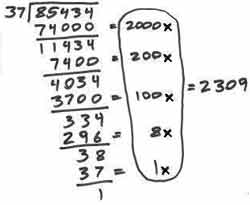PRACTICE TEST:DATA INTERPRETATION

Given below is the percentage break up of 3600 students across various streams in ABC College of Arts, Commerce and Science:
Also given below is a table indicating the percentage break up of male students and female students across the various streams:
|
Stream |
Male |
Female |
|
Arts |
50% |
2a% |
|
Science |
20% |
b% |
|
Commerce |
30% |
a% |
In the above table, ‘a’, ‘b’ are positive real numbers and 2a is the product of 2 and ‘a’.
1. For the commerce stream, what is the ratio of the number of male students to female students ?
1) 9 : 4 2) 2 : 1 3) 5 : 3 4) Cannot be determined
2. What is the difference between the number of female students studying Arts and female students studying Science ?
1) 144 2) 216 3) 288 4)None of these
3. What is the percentage of female students in Thakur College?
1)60% 2) 40% 3)50% 4) Cannot be determined
In a Class X Board examination, ten papers are distributed over five Groups – PCB, Mathematics, Social Science, Vernacular and English. Each of the ten papers is evaluated out of 100. The final score of a student is calculated in the following manner.
First, the Group Scores are obtained by averaging marks in the papers within the Group. The final score is the simple average of the Group Scores.
The data for the top ten students are presented below. (Dipan’s score in English Paper II has been intentionally removed in the table).
Note: B or G against the name of a student respectively indicates whether the student is a boy or a girl.
| PCB Group | Math’s Group |
Social Science Group |
Vernacular Group |
English Group |
|||||||
| Name of the student | Phy. | Chem. | Bio. | Hist. | Geo. | Paper I | Paper II | Paper I | Paper II | Final Score | |
| Ayesha(G) | 98 | 96 | 97 | 98 | 95 | 93 | 94 | 96 | 96 | 98 | 96.2 |
| Ram(B) | 97 | 99 | 95 | 97 | 95 | 96 | 94 | 94 | 96 | 98 | 96.1 |
| Dipan(B) | 98 | 98 | 98 | 95 | 96 | 95 | 96 | 94 | 96 | ?? | 96.0 |
| Sagnik(B) | 97 | 98 | 99 | 96 | 96 | 98 | 94 | 97 | 92 | 94 | 95.9 |
| Sanjiv(B) | 95 | 96 | 97 | 98 | 97 | 96 | 92 | 93 | 95 | 96 | 95.7 |
| Shreya(G) | 96 | 89 | 85 | 100 | 97 | 98 | 94 | 95 | 96 | 95 | 95.5 |
| Joseph(B) | 90 | 94 | 98 | 100 | 94 | 97 | 90 | 92 | 94 | 95 | 95.0 |
| Agni(B) | 96 | 99 | 96 | 99 | 95 | 96 | 82 | 93 | 92 | 93 | 94.3 |
| Pritam(B) | 98 | 98 | 95 | 98 | 83 | 95 | 90 | 93 | 94 | 94 | 93.9 |
| Tirna(G) | 96 | 98 | 79 | 99 | 85 | 94 | 92 | 91 | 87 | 96 | 93.7 |
1.How much did Dipan get in English Paper II?
A.94
B.96
C.97
D.98
E.99
2.Students who obtained Group Scores of at least 95 in every group are eligible to apply for a prize. Among those who are eligible, the student obtaining the highest Group Score in Social Science Group is awarded this prize.
The prize was awarded to:
A.Shreya
B.Ram
C.Ayesha
D.Dipan
E.No one from the top ten
3.Among the top ten students, how many boys scored at least 95 in at least one paper from each of the groups?
A.1
B.2
C.3
D.4
E.5
4.Each of the ten students was allowed to improve his/her score in exactly one paper of choice with the objective of maximizing his/her final score. Everyone scored 100 in the paper in which he or she chose to improve.
After that, the topper among the ten students was:
A.Ram
B.Agni
C.Pritam
D.Ayesha
E.Dipan
5.Had Joseph, Agni, Pritam and Tirna each obtained Group Score of 100 in the Social Science Group, then their standing in decreasing order of final score would be:
A.Pritam, Joseph, Tirna, Agni
B.Joseph, Tirna, Agni, Pritam
C.Pritam, Agni, Tirna, Joseph
D.Joseph, Tirna, Pritam, Agni
E.Pritam, Tirna, Agni, Joseph











